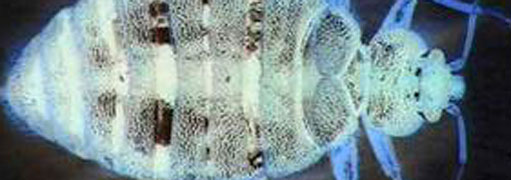The bedbug may be the best known—and feared—pest in the country beside the cockroach. The media commonly reports that they’re growing in numbers and spreading across the country. In reality, they’ve always been around and always will be. Bedbugs were prevalent before they caught the attention of cable news; they just weren’t getting press. And in our litigious society, people are more prone to sue hotels and motels that present these pests. As a result, pest control companies charge exorbitant fees to control them, usually using toxic pesticides. But if you made a list of the 100 most dangerous pests in the world, the bedbug wouldn’t make it.Bedbugs are a problem in some urban areas and hotels, but the good news is that they don’t carry diseases. Some people don’t even know they’ve been bitten while others break out in an impressive rash. When I’m bitten, there are no marks at all, and I don’t feel anything. Everyone reacts differently. It’s impossible to diagnose bedbugs as a problem based on bites alone.The basics: The tiny critters are wingless and oval-shaped, only a few millimeters long. They’re usually brown in color, but change to a deeper reddish-brown after feeding. Their flat shape makes it easier to hide in cracks and crevices in homes or hotel rooms. They’re also prolific: Females lay two to three eggs every day throughout their entire lives. The cream-colored eggs are attached to rough surfaces and hatch in about 10 days. Usually, many eggs are laid in the same area as a cluster. Baby bedbugs progress through five six-to-eight-week nymphal stages before they reach adulthood, and adults live between six months and a year depending on how much food they find.That’s where you come in. Attracted to sleeping people by warmth and the carbon dioxide their bodies give off, bedbugs almost always feed at night and hide during the day. They’re secretive, hiding in areas close to their food source—mostly where people sleep but sometimes in furniture. They live under mattresses, in voids in wooden floors, behind paintings, along baseboards, under the carpet, inside various cracks and crevices in walls, behind pictures hanging on walls, in furniture near the bed and behind loose wallpaper. Small black specks on the mattress (er, fecal matter) or blood spots on the sheets can also indicate an infestation.Bedbugs have piercing mouth parts, and like most blood-sucking insects, they inject an anti-coagulant into each bite site during feeding to prevent clotting while they’re dining. It takes less than 10 minutes for a bed bug to complete a meal. They rarely travel far from their food source, but if they haven’t fed in about two weeks, they will migrate somewhere else. If bedbugs have set up shop in an apartment complex, condominium, hotel or motel, they’ll work their way to adjacent rooms in search of food. If an infested room isn’t dealt with, the bugs spread to other rooms looking for food. Bedbugs have few natural predators. Several species of ants, including pharaoh ants (Monomorium pharaonis) and Argentine ants (Iridomyrmex humilis) are known to feed on bedbugs, and the American cockroach (Periplaneta Americana) is said to like them, although that hasn’t been proven. Most folks don’t want ants or cockroaches in their sleeping quarters anyway, even if they are looking to hunt bedbugs.The blood-sucking critters generate a lot of money for the pest control industry. But more often than not, exterminators can’t control them for a variety of reasons. They don’t understand bedbug biology, and they don’t realize that the insects develop a resistance to most pesticides. One problem with the industry is that a number of pest control operators are poorly trained and not well regulated. Many aren’t familiar with proper procedures for safely handling the chemical they’re applying.If an exterminator tells you the pesticide he’s spraying is perfectly safe, you may have a problem. It would be a federal violation to make that kind of statement. If he says the chemical is so safe you can drink it, offer him a glass. And if an exterminator is spraying your baseboards with a pesticide, it simply means he doesn’t know what he’s doing. When I first started in the industry decades ago, a supervisor told me that spraying baseboards for bedbugs was simply to kill time so the customer would think they were getting their money’s worth. It was true then, and it is true now. Never let anyone spray all the baseboards in your house for bed bugs. It’s a gimmick.
I will help anyone manage their pests without using pesticides. Ask about pest identificationEmail me at askthebugman2013@gmail.com or call at 505-385-2820Follow me on Twitter @askthebugmanwww.askthebugman.com






